Hisense E8Q is a television that clearly draws heavily from the U7Q model – and that’s a great thing. After all, this is its European version, not another “slimmed down” mutation. After just a few moments with this screen, it’s clear that the E8Q is putting up a fight. And in many areas, it really succeeds. To start with – what impresses is that the blacks are deep, the contrast is high, and the brightness exceeds the threshold that we can simply call satisfactory. Add to that nearly perfect fluidity of tonal transitions, and we have an image that looks very mature, especially for this price segment. In gaming? Just as good. VRR, ALLM support, 144 Hz in 4K, and even 240 Hz in Full HD – it’s hard to find fault here. Well… almost. Because the E8Q has one additional flaw compared to the U7Q – the sound. In our unit, at moderate volume levels, the back of the cabinet began to resonate, producing rather unpleasant crackling noises. This might be a flaw of the test unit, but since the U7Q simply performed better – it’s worth noting. Especially if you find both models at a similar price. We can confidently state that the E8Q is a television that can confidently fight for the attention of those looking for a quality Mini-LED at reasonable prices. If a good price opportunity arises, it’s definitely worth it – because we receive almost the same as in the U7Q. And that means a really solid picture, excellent gaming features, and overall very good equipment that you can stick with for a while.
- Matching (Score)
- Our verdict
- TV appearance
- Where to buy
- Contrast and black detail
- HDR effect quality
- Factory color reproduction
- Color reproduction after calibration
- Smoothness of tonal transitions
- Image scaling and smoothness of tonal transitions
- Blur and motion smoothness
- Console compatibility and gaming features
- Input lag
- Compatibility with PC
- Viewing angles
- TV efficiency during daytime
- Details about the matrix
- TV features
- Apps
- Playing files from USB
- Sound
Hisense E8Q vs Philips OLED910
Direct compare
E8Q
OLED910
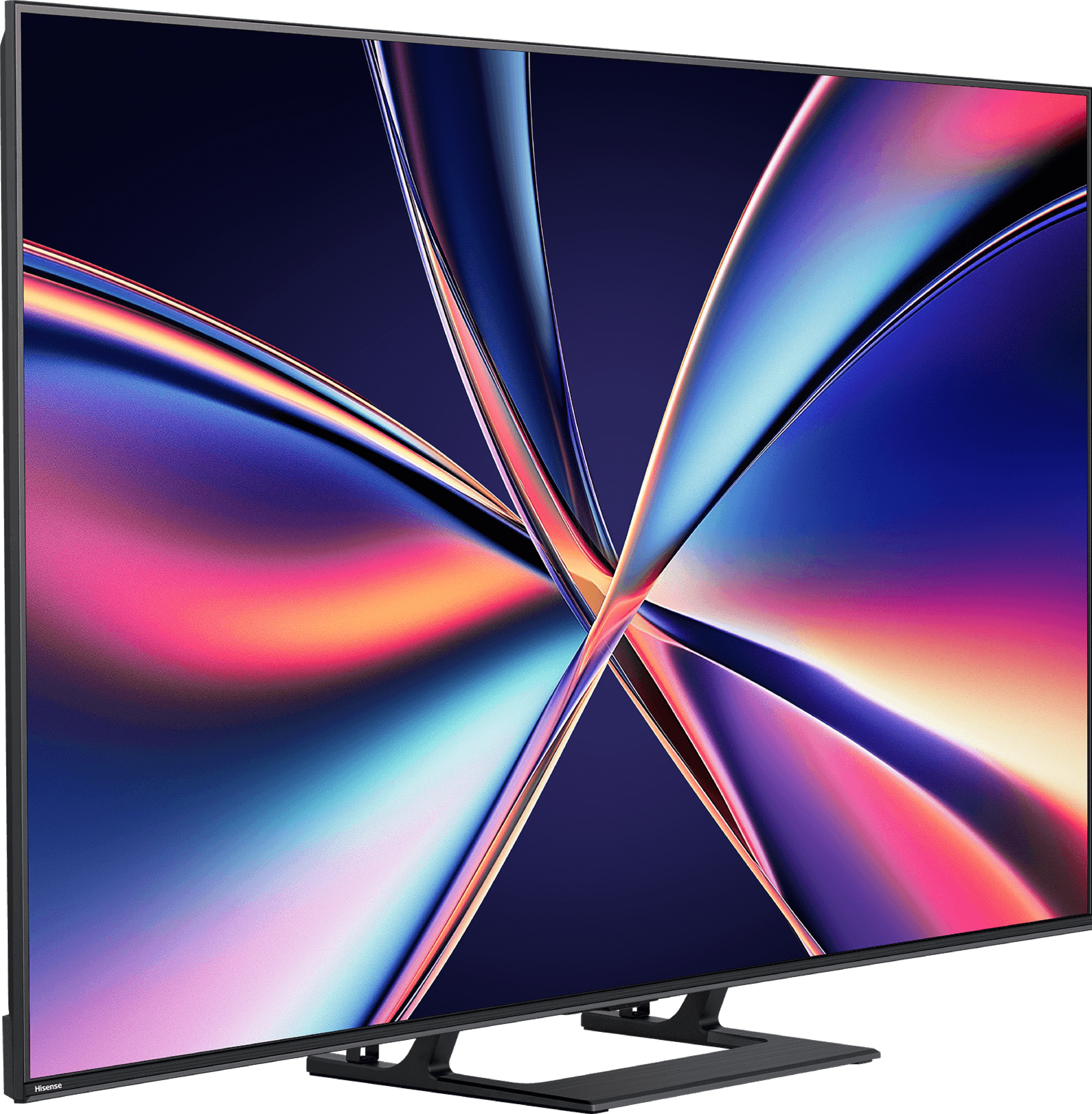

Panel type: LCD VA
Resolution: 3840x2160
System: VIDAA
Model year: 2025
Complete the survey to find out the result

Panel type: WRGB OLED
Resolution: 3840x2160
System: Google TV
Model year: 2025
Complete the survey to find out the result

Overall rating
7.2
8.5
Movies and series in UHD quality
6.7
8.9
Classic TV, YouTube
6.8
8.8
Sports broadcasts (TV and apps)
6.5
8.5
Gaming on console
8.0
9.5
TV as a computer monitor
8.6
6.5
Watching in bright light
6.2
7.3
Utility functions
8.9
6.4
Apps
7.7
9.6
Sound quality
7.2
9.5
Complete the survey to find out what fits your preferences
Advantages
Great contrast and deep blacks
Very good smoothness of tonal transitions (close to reference level)
High brightness
Supports 4K 144 Hz and even 240 Hz in Full HD
VRR, ALLM, G-SYNC – a full package for gamers
Low input lag
Many classic TV features built into the VIDAA system
Stunning brightness, over 2000 nits in HDR!
Perfect black and very high contrast
Supports all major HDR formats: Dolby Vision and HDR10+
Very low input lag, excellent for gaming
Great motion smoothness, 144 Hz refresh rate and support for VRR and ALLM.
Impressive four-sided Ambilight system
Google TV with a huge app library and efficient Google Assistant.
One of the best-sounding TVs thanks to the Bowers & Wilkins soundbar
Support for audio formats Dolby Atmos and DTS:X
Disadvantages
No support for HGiG (makes setting HDR on consoles difficult)
Poor viewing angles – typical for VA panels
Closed VIDAA system – lack of some applications
Inferior sound quality compared to the twin model U7Q
Only two HDMI 2.1 ports instead of four (might be a limitation with more than one console)
Average font readability when working with PC due to the lack of full 4:4:4 chroma
Lack of several classic features – PiP, USB recording, infrared remote
Price compared to competitors
Our verdict
Philips OLED910 is one of the contenders for the title of TV of the Year 2025 – and we say this with full confidence. Thanks to the META panel used, specifically the Tandem OLED produced by LG Display, we get top-tier, unprecedented brightness in WOLED televisions. Combined with perfect contrast, this delivers unmatched experiences for evening viewing that are hard to find elsewhere. And if we add to that the four-sided Ambilight system, then evening screenings can look better than on any other television. OLED910 is not just a screen for movies, but also a fantastic choice for gamers. The fast 144 Hz panel, alongside a suite of gaming features, does the trick, giving the impression that this is equipment designed with modern gaming in mind. The sound also deserves special mention – in our opinion, it's the best built-in speaker system we've encountered in a television so far. The soundbar created in collaboration with Bowers & Wilkins shows that you can do without an external setup, and if someone wants, they can always add a subwoofer and step up to a fully-fledged home theatre experience. Of course, this isn’t the cheapest model, and compared to the competition, it requires digging deeper into your pockets. But it also has a few aces up its sleeve that make the extra cost appear justified. The question is: are you ready to spend more to have Ambilight, a Bowers & Wilkins soundbar, and a Tandem OLED panel? That's something everyone has to assess for themselves. We can say one thing – by choosing OLED910, you're buying one of the most interesting televisions of 2025.
TV appearance
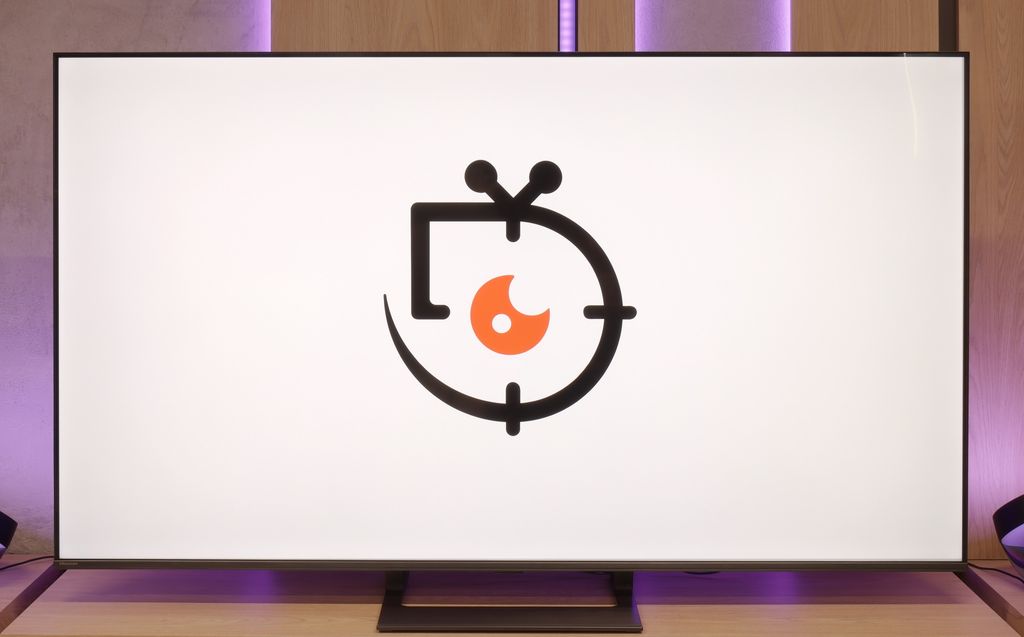
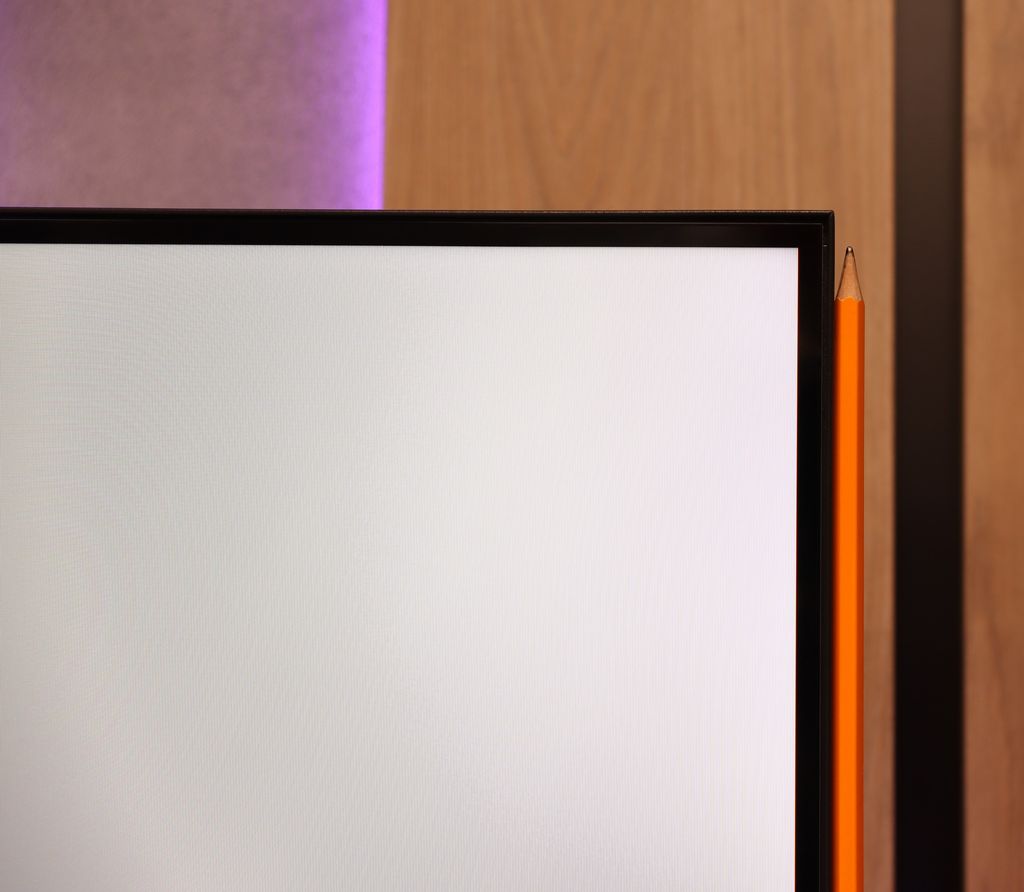
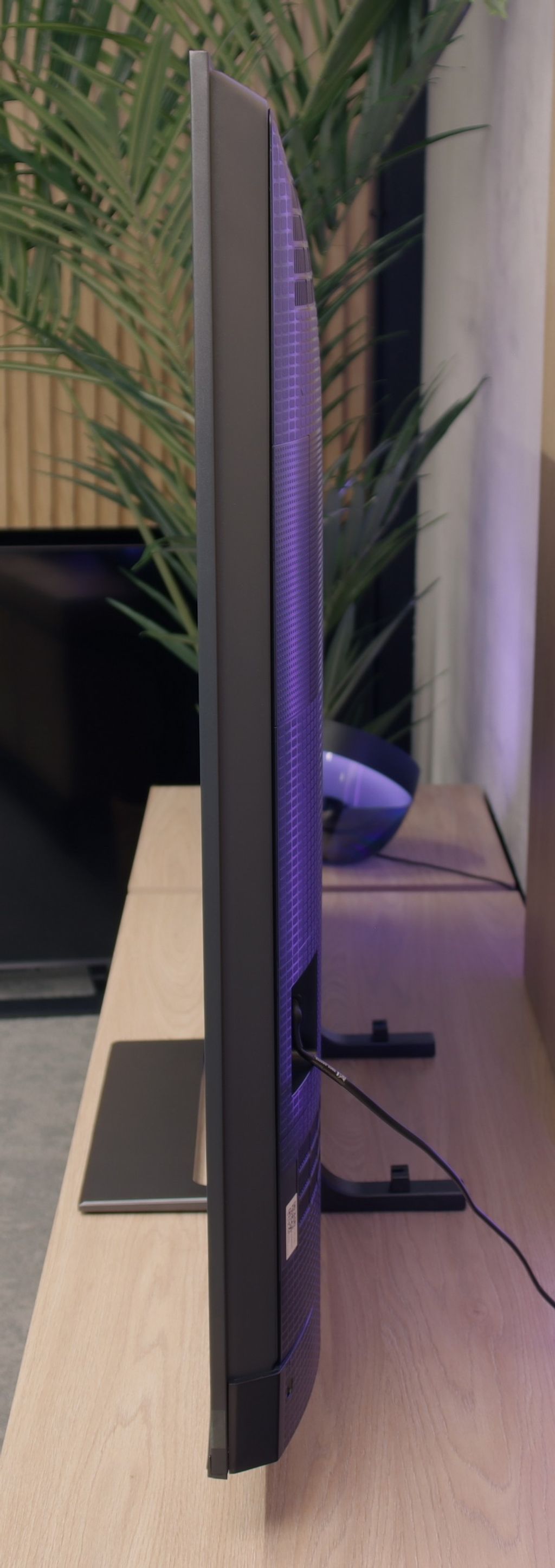
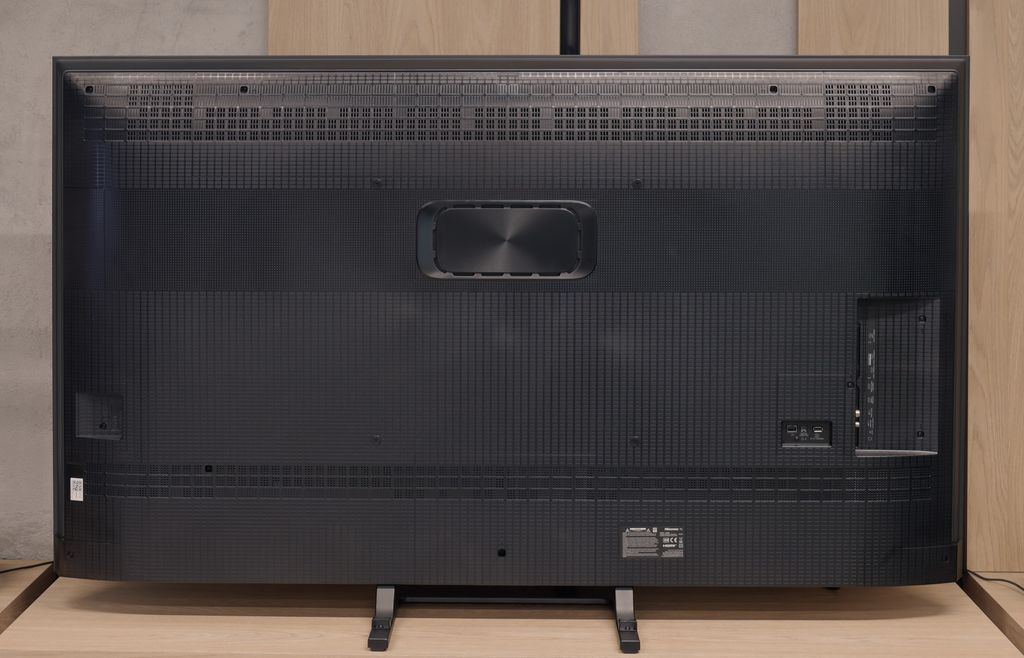




Contrast and black detail
7.6/10
10/10
Local dimming function: Yes, number of zones: 220 (10 x 22)
Contrast:

Result
277,000:1

Result
43,700:1

Result
15,750:1

Result
8,850:1

Result
6,350:1

Result
∞:1

Result
∞:1

Result
∞:1

Result
∞:1

Result
∞:1
Halo effect and black detail visibility:
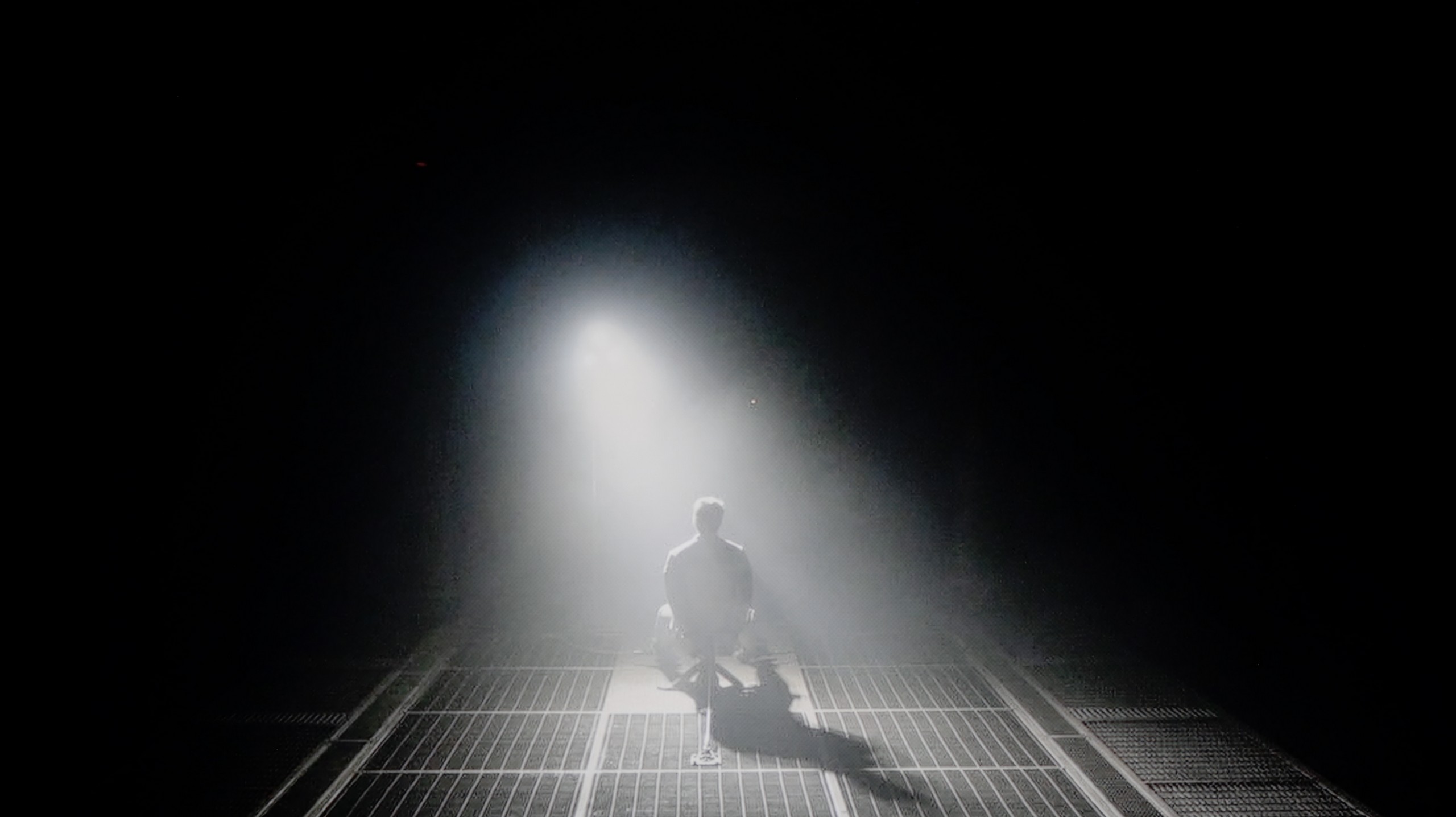

Similar to the U7Q, the E8Q model uses a VA panel and Mini-LED backlighting. The number of dimming zones also remains at a very similar level – in the 65-inch variant we tested, we counted 220 zones, which is exactly the same as in the U7Q. On paper, it looks really good for this price segment, and even better – in practice. The contrast is high, and the black can be really deep. In many scenes, the lights are clearly separated, and the image gains a sense of space. This is one of those cases where Mini-LED shows it can come close to OLED quality – of course, assuming we understand the limitations we have to consider. In very challenging scenes, there may be slight brightening or a minor halo effect around bright objects, but these are phenomena typical of this technology and are not very noticeable. Ultimately – the contrast and blacks in the E8Q are really solid, nearly identical to the U7Q model. It's hard to nitpick, especially when we look at the price of the television.
As is fitting for an OLED TV, the Philips OLED910 also offers an absolute level of black and remarkable contrast. This is a natural advantage of organic technology – each pixel is controlled independently, so when it needs to be black, it simply turns off. The image gains a depth that even the best Mini-LED TVs cannot reproduce, where there is always a risk of slight "blooming" or halo effect around bright elements. With the OLED910, that is not the case – dark scenes are fully credible, while the TV can accurately render details in the highlights, maintaining their natural texture. In everyday viewing, this translates to an exceptional sense of realism and cinematic quality. In this category, the OLED910 undoubtedly deserves the highest ratings.
HDR effect quality
4.5/10
8.8/10
Luminance measurements in HDR:

Result
531 nit

Result
148 nit

Result
320 nit

Result
100 nit

Result
625 nit

Result
2008 nit

Result
2109 nit

Result
2214 nit

Result
2152 nit

Result
1382 nit
Scene from the movie “Pan” (about 2800 nits)


Scene from the movie “Billy Lynn” (about 1100 nits)


Static HDR10


Dynamic: Dolby Vision
Dynamic: Dolby Vision


HDR luminance chart:
Philips OLED910
HDR luminance
Luminance of RGB colors
Hisense E8Q
HDR luminance
Since the E8Q is a twin of the U7Q, it’s no surprise that the HDR effect quality is almost identical. On paper, it looks promising – a peak brightness of 800 nits can impress in many scenes. Moments like light flashes in “The Meg” or shots of the sun in “Life of Pi” can indeed create a “wow” effect. But the longer we watch, the more we notice the limitations. The problem arises when small, bright details need to be shown against a dark background. In such situations, the dimming algorithms try to protect the contrast, but in the process, they also dim what should shine the brightest. Instead of dazzling details, we get almost invisible points of light. This is typical for Mini-LED in this price segment and is not surprising – but it’s worth knowing that the HDR effect will not always be fully preserved. Fortunately, the colour reproduction provides reasons to be pleased. A coverage of the DCI-P3 palette of about 94% is a very good result, and the quantum dot layer used (more precisely, PFS) does its job – colours are saturated and vibrant, especially with 4K content.
OLED910 is simply an absurdly bright television for an OLED. All thanks to the new panel from LG Display, the Tandem RGB OLED, which Philips has branded as "META OLED". It is this panel that allows for over 2000 nits of brightness in films, which not long ago was completely unachievable in OLEDs. The way the television handles full-screen scenes flooded with bright light also deserves high praise. Usually, in OLEDs, brightness drops significantly, but here it remains at a great level – around 1400 nits. These values are almost reference-level, and combined with excellent colour reproduction at 99% DCI P3 and 82% BT.2020, it gives us an HDR effect that can confidently be called one of the best in the world.
Factory color reproduction
6.5/10
5.5/10


Factory Mode
After calibration


Factory Mode
After calibration
Testing the Hisense E8Q in Filmmaker mode, we were hoping for a potentially neutral picture resembling the director's vision. Unfortunately – although it doesn't look too bad on paper (the colour reproduction errors aren't significant), in practice the image feels somewhat unnatural. The reason? The blue colour is boosted too strongly and there is a deficiency of red in the white balance. The effect? Scenes appear cool, and the white seems slightly bluish. Alongside the U7Q model, we also noticed a specific approach to brightness management here. The brightness reproduction curve for HDR content (EOTF) shows that the TV can significantly dim small, bright elements on the screen to maintain contrast – but sometimes it goes too far. On the other hand, it can excessively brighten larger, very bright areas, which disrupts tonal balance. It's a compromise that may not suit everyone – especially if you want a potentially faithful picture straight out of the box.
Unfortunately, when it comes to colour reproduction straight out of the box, the Filmmaker mode on the OLED910 really falls short. The television overemphasises the blue colour and at times it looks almost like a shop mode. It gives the impression that the manufacturer hasn't quite calibrated the device properly. The result is that colours appear unnatural, and the overall look resembles a slightly exaggerated display from a store showcase. HDR content looks much better, where apart from a slight loss of detail in blacks, there’s hardly anything to complain about. The problem is that in everyday viewing, it’s actually SDR materials that matter the most – and on the OLED910, they just look poor and significantly deviate from what we would expect from a television of this class.
Color reproduction after calibration
7.4/10
9.4/10




Calibration of the Movie mode yielded really good results, especially regarding SDR content. The white balance was successfully adjusted, giving the image a natural look – it appeared almost reference-level. The colours were well-saturated, and the overall experience of the content improved significantly. Unfortunately, when we switched to HDR materials, the familiar issues from the U7Q model returned. The TV still likes to "do its own thing," as seen from the analysis of the EOTF brightness characteristics – despite calibration, the E8Q still darkened small details in the shadows, while brighter parts of the screen were sometimes excessively boosted. In practice, this means that in darker scenes, some of the smallest details could simply disappear. Although it's worth noting that the entire calibration process brought a lot of good, not everything can be bypassed – even with the use of professional tools. The E8Q can impress with its picture, but in HDR content, its construction limitations become apparent, and it's worth keeping this in mind.
Fortunately, it quickly turned out that it wasn't the panel causing the problems, but the way Philips factory-tuned the OLED910. After calibration, the television showcased its full potential, and only then could we see what the new panels from LG Display were truly capable of. We primarily corrected the white balance and brightness characteristics, successfully taming the excessive blue and giving the image a natural look. The final effect can be described as excellent. Errors on the Color Checker palette rarely exceeded a value of 3, which in practice means an image close to ideal and colours presented in line with the creators' intent. In SDR content, the effect was stunning, and in HDR, the improvement was even more noticeable – gradients became cleaner, and colours fuller and more accurate. After calibration, the OLED910 transformed from a disappointing television into equipment that can be confidently referred to as reference-grade in terms of colour accuracy.
Smoothness of tonal transitions
9.9/10
7.5/10












In this category, the Hisense E8Q really demonstrates its quality. The transitions between colours are very smooth, without any "steppings" or clear boundaries between tones. The image looks natural, and the colour gradation performs exceptionally well – even in more challenging scenes. If there are any minor imperfections, they are subtle enough not to be noticeable. It's hard to find fault here – it looks almost perfect.
When it comes to colour combinations, the OLED910 performs quite well. In bright scenes, especially where strong bright colours dominate, it's hard to notice any serious issues, and the picture looks very clean. It looks worse in darker segments, closer to the grey palette – there you can notice characteristic banding, which can start to irritate more demanding viewers after a longer viewing period. Overall, however, the level is decent, and in most films or series, the effect shouldn't be particularly bothersome.
Image scaling and smoothness of tonal transitions
6/10
7/10
Smooth transition function
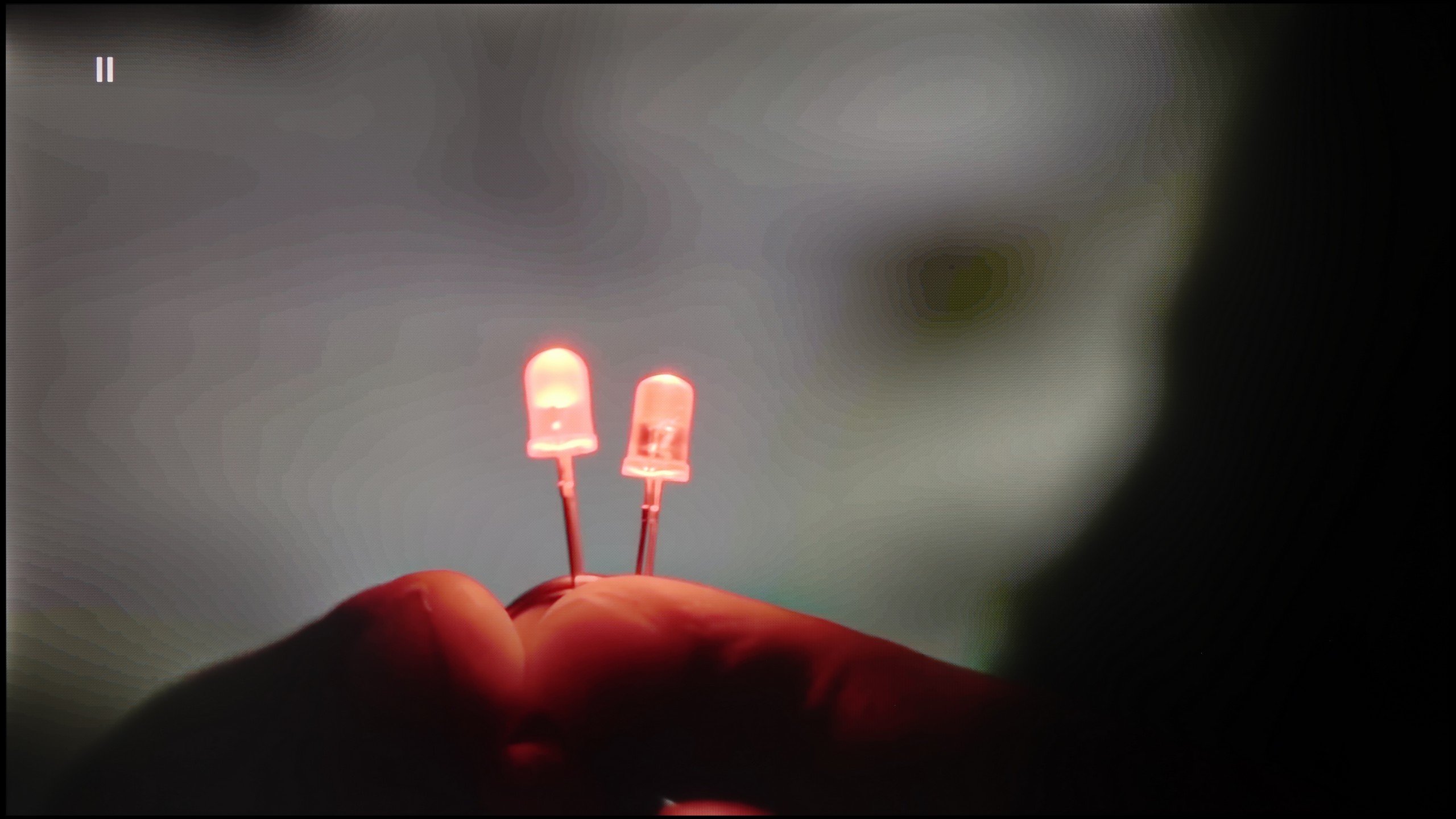

Image without overscan on the SD signal


In the case of older materials of lower quality, gentle smoothing of tonal transitions often comes in handy. The Hisense E8Q, like the U7Q, has a "Smooth and Gradient Picture" feature, but unfortunately, its effectiveness leaves much to be desired. The "Low" setting is nearly invisible in operation, while higher settings blur details instead of improving transitions. The good news is that the feature does not compromise film grain, which means it does not degrade the structure of the image. On the positive side, scaling is commendable. The TV can reasonably convert older content to a higher resolution – without artificially accentuating contours or excessive sharpening. Although it doesn't match the best models in this category, it performs quite well for its class.
The previously visible colour connections can be largely mitigated thanks to a feature called "distortion reduction." Similar to the OLED820, it’s best to set it to medium level, as it then provides quite decent results – smoothing unwanted tonal transitions while not taking away too many details from the image. Although at times the effect may be a bit too aggressive, in everyday viewing, this function can be considered useful.
When it comes to image scaling, the OLED910 performs really well. The test material with the model showcased a characteristic soft look typical of Philips – at times almost too soft – but at any moment this can be adjusted with the sharpness slider to tailor the image to your own preferences. It’s also a plus that the television has no issues with overscan, which still occurs in some competitors' models. It’s a minor detail, but it’s pleasing as it means that all content, even the oldest, is displayed as it should be.
Blur and motion smoothness
7.5/10
8.5/10


Blur (native resolution, maximum refresh rate):
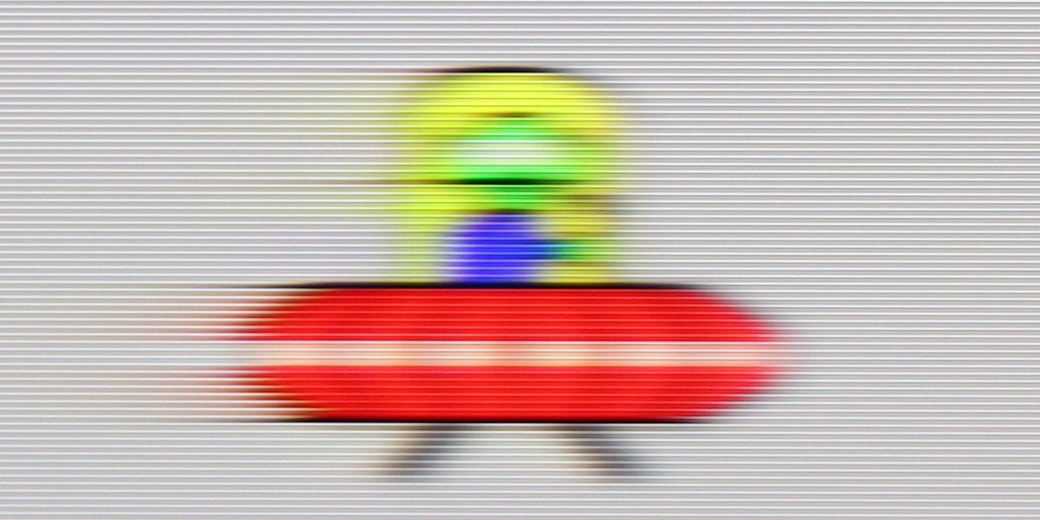
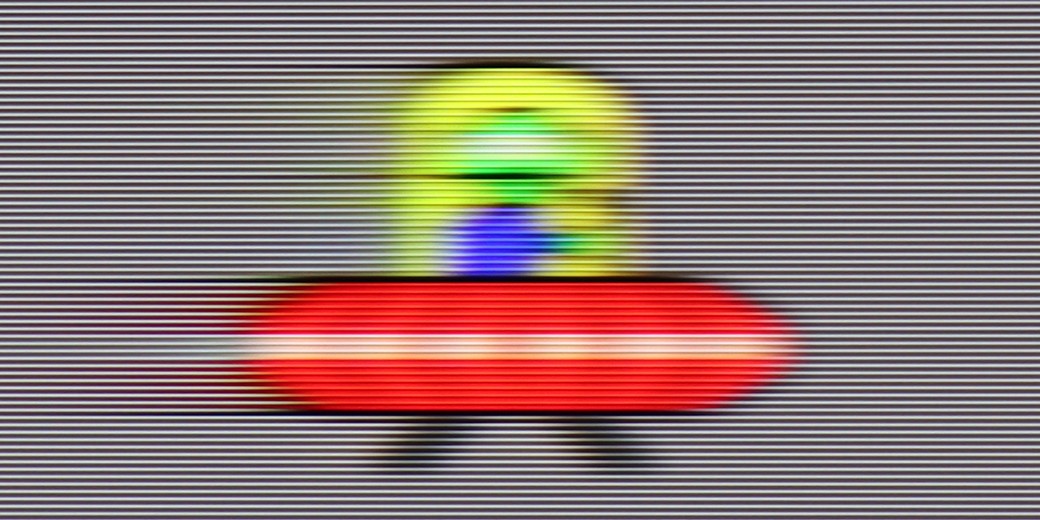




Blur (BFI function enabled):



Smużenie (4K 120Hz):
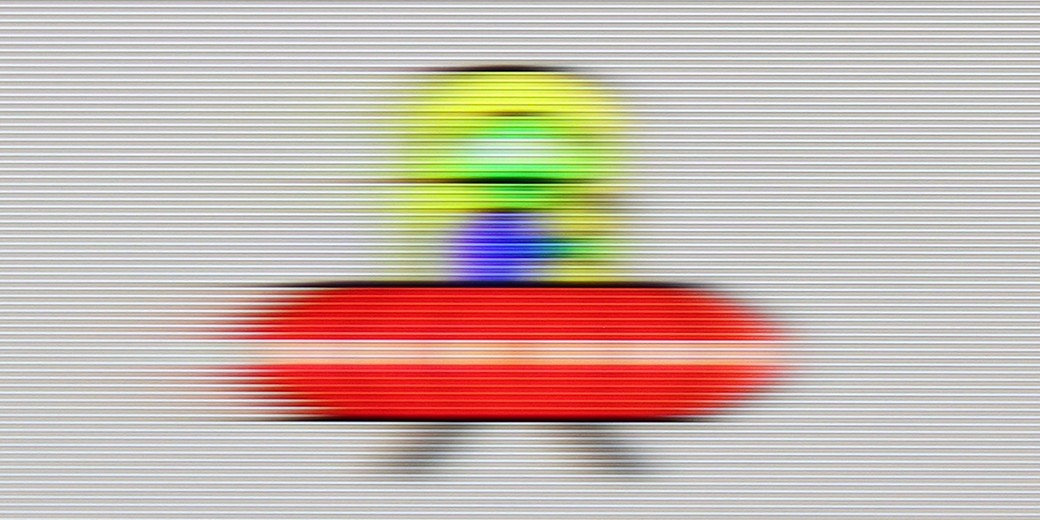

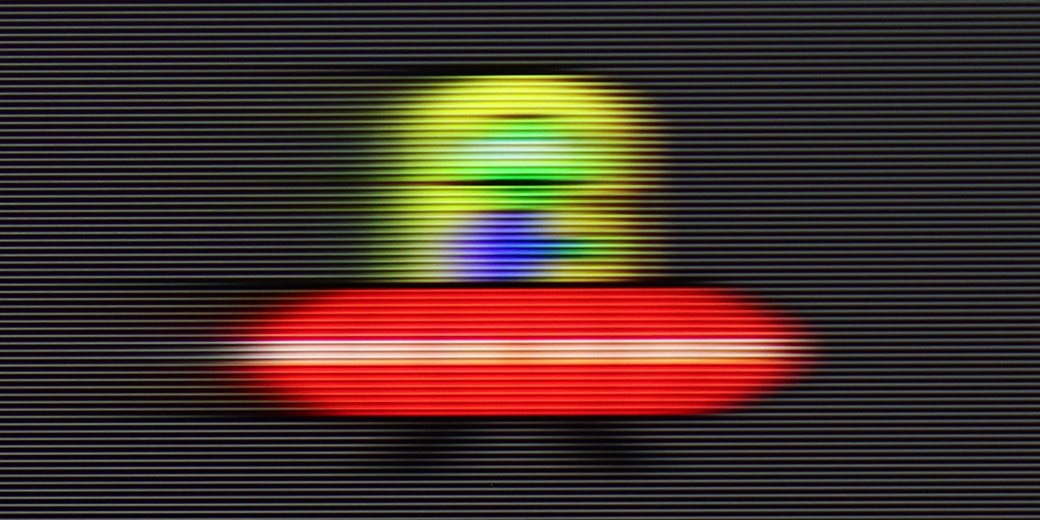
Smużenie (4K@144Hz):



Similar to the U7Q, the E8Q model is a fast television designed with dynamic content in mind. It supports a 144 Hz refresh rate at 4K resolution, and if for some reason someone is still gaming in Full HD – it can even reach 240 Hz. This is a significant advantage, especially for PC users looking for maximum smoothness. In everyday use, the television performs very well. The “Ultra Motion Smoothness” mode gives us two sliders, allowing you to set the picture to your preference – whether it's more cinematic with the film frame preserved or highly smoothed, almost “TV show-like.” It's good that the manufacturer provides a choice here, instead of imposing one style. On sports material, live broadcasts, or in games – motion looks clean and stable. Sure, it’s not at the OLED level, but for this price range, the E8Q does a really good job.
OLED910 is a TV with a refresh rate of 144 Hz. It’s a bit of a shame that Philips didn’t opt for 165 Hz, as we know that the matrix used in it is capable of that. On the other hand, such a bonus will mainly benefit PC gamers, as for everyday use, the most important thing is the 120 Hz refresh rate, which is fully sufficient. Combined with the advantages of the OLED matrix – lightning-fast pixel response times and the absence of motion blur, the picture is impeccably sharp and fast, even in dynamic action scenes. The traditional motion smoother from Philips called “Motion Style” also deserves praise. We can easily adjust it to our own preferences: the “Smoothness” slider is for movies and allows you to choose between a more “framey,” cinematic character and a smooth, theatrical image. Meanwhile, the “Motion Blur Reduction” slider is intended for sports; here, it’s worth setting it to the maximum value so that the image is clear and sharp during very fast shots.
Console compatibility and gaming features
8.5/10
9.8/10
- ALLM
- VRR
- VRR range48 - 240Hz48 - 144Hz
- Dolby Vision Game Mode
- Correct implementation of HGIG
- 1080p@120Hz
- 1440p@120Hz
- 4K@120Hz
- Game bar
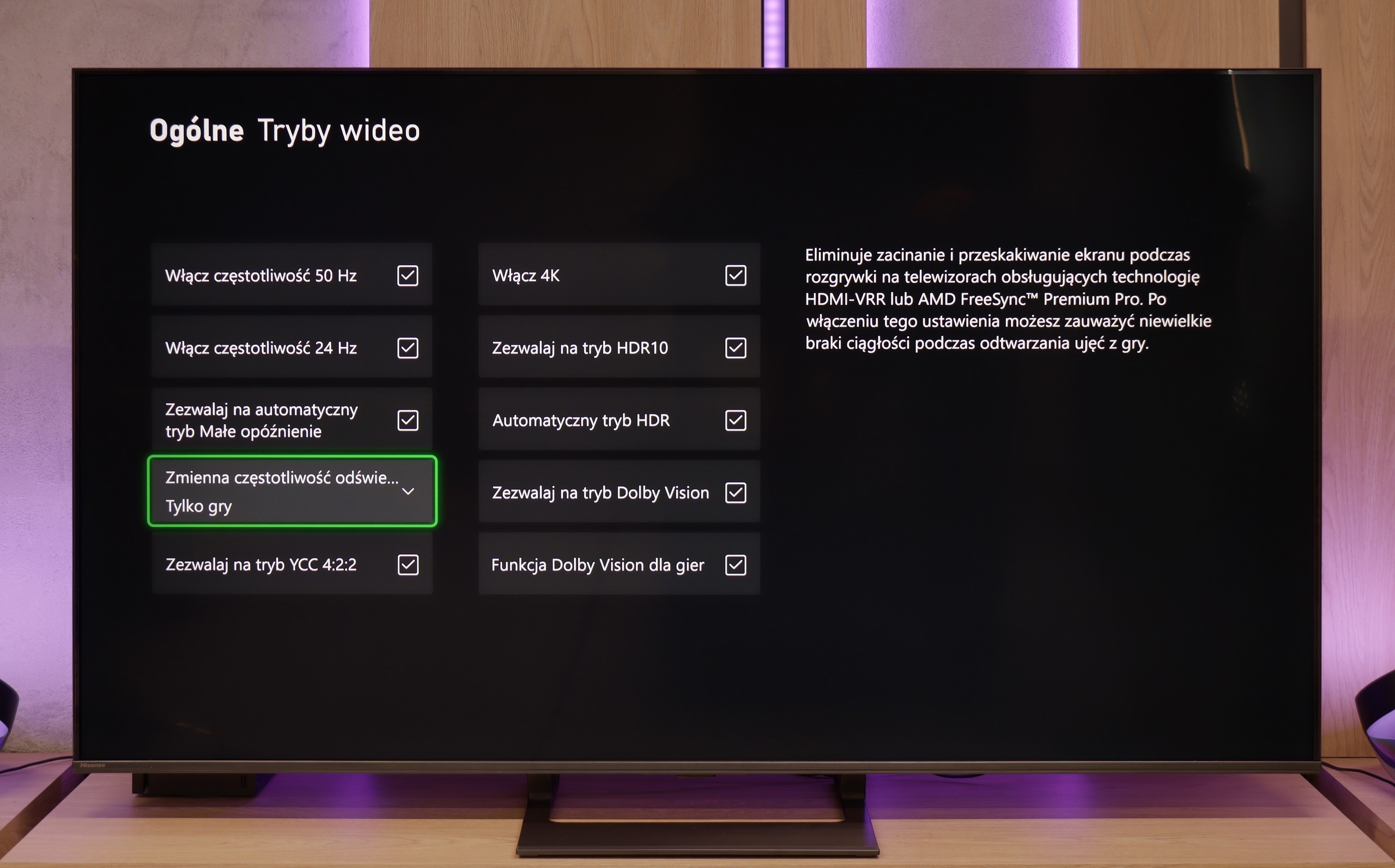

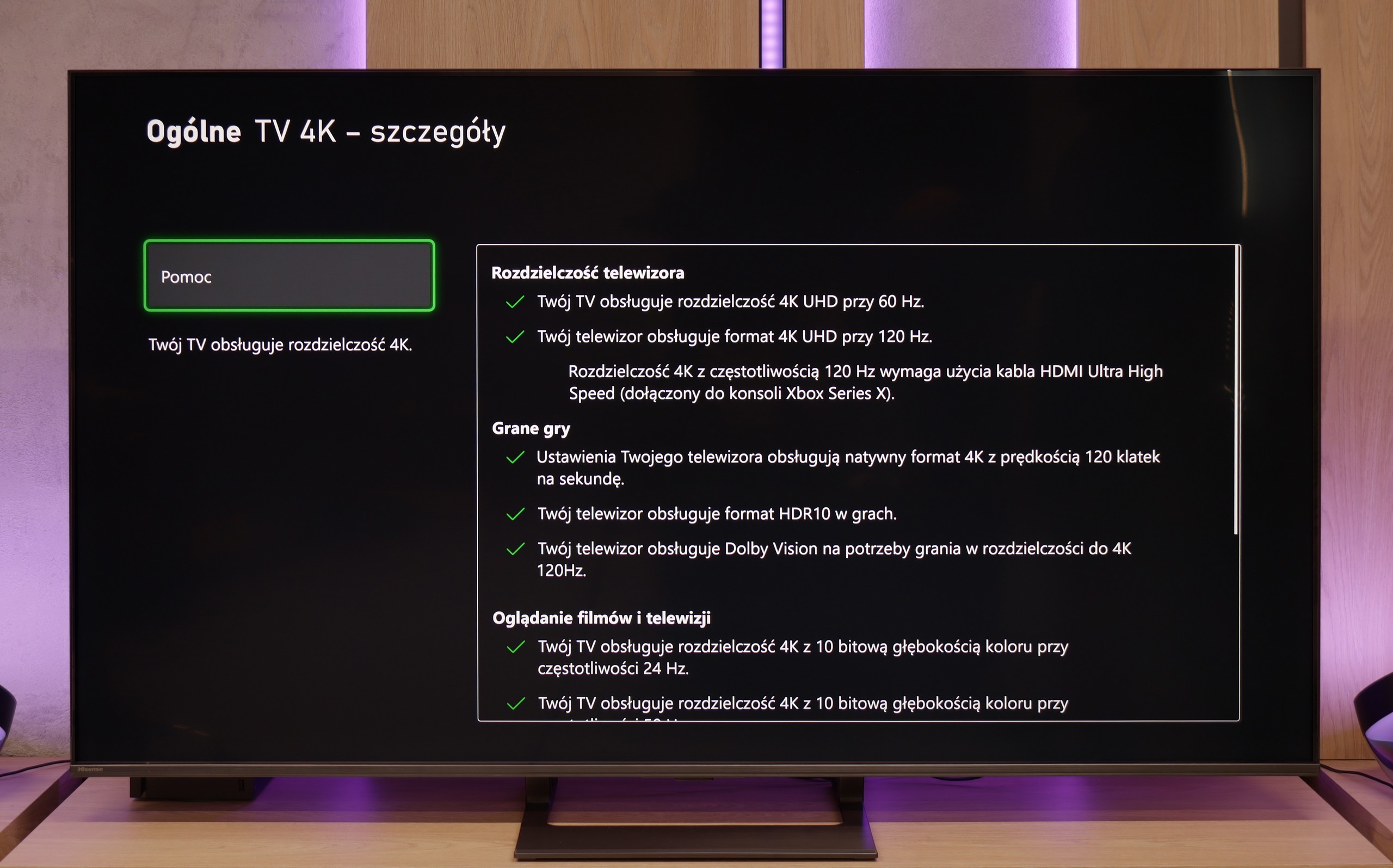

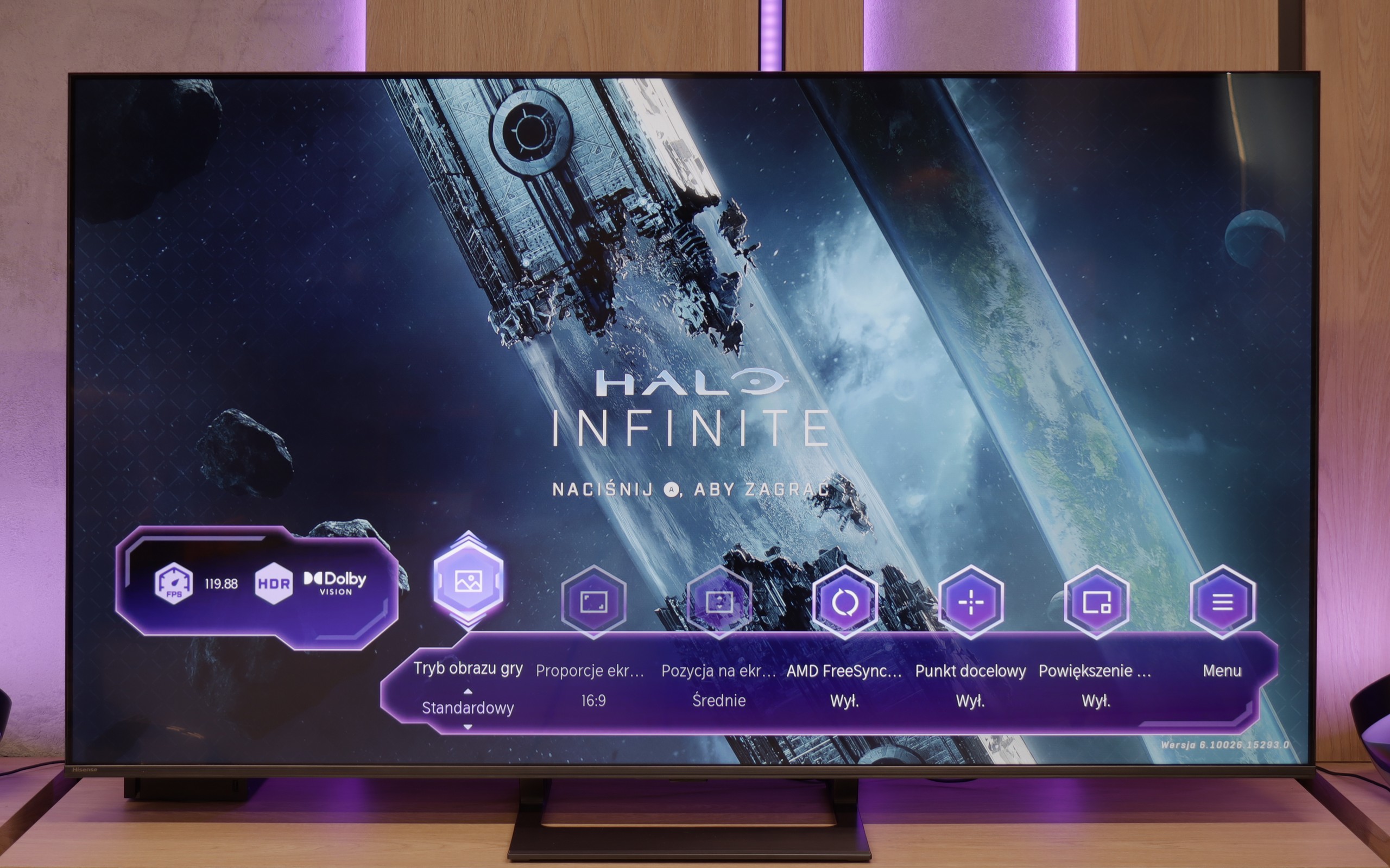

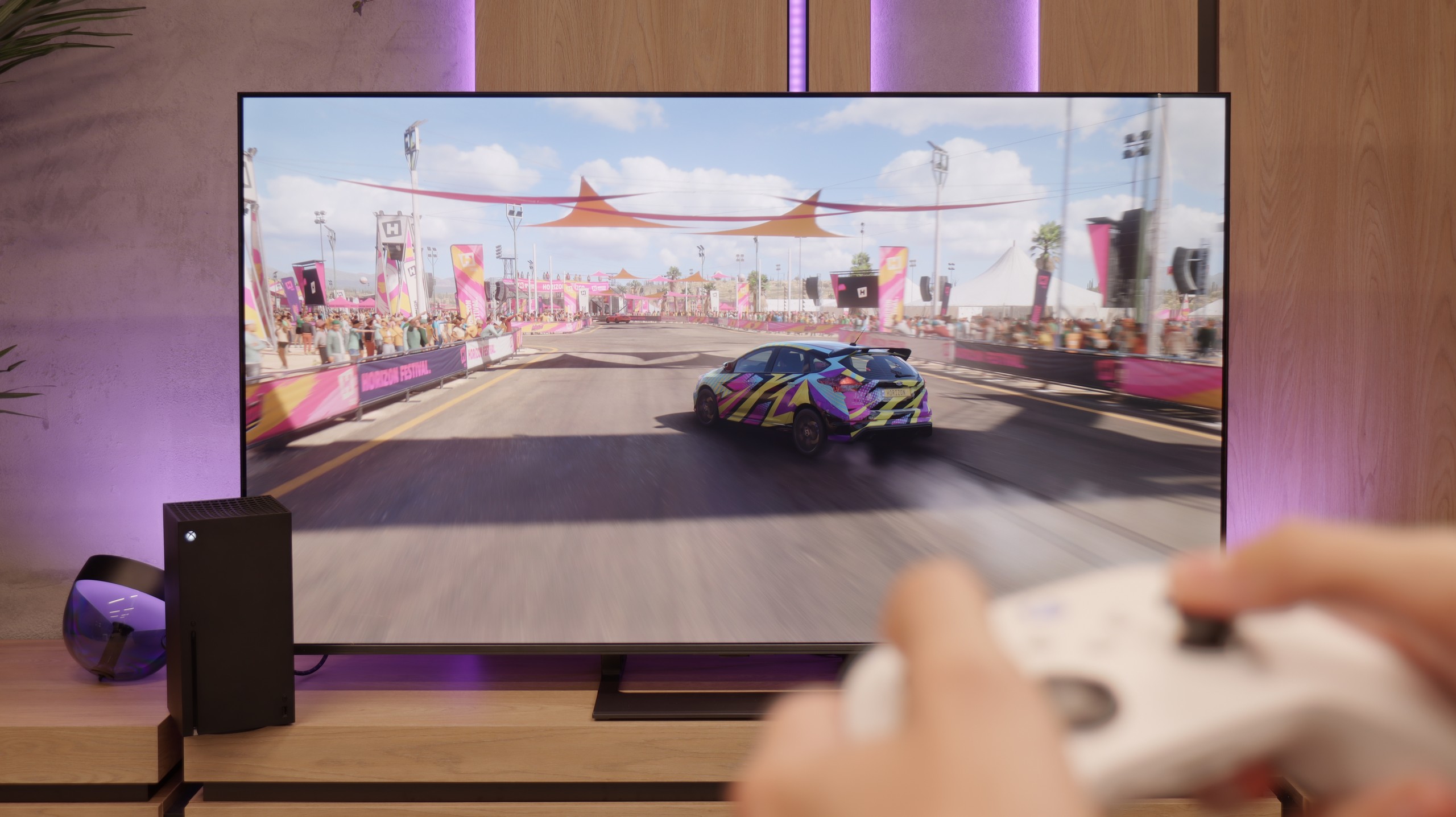

Hisense E8Q does not hide its gaming pedigree. Just the specifications reveal that we are dealing with a television that will perform excellently as a gaming screen. Variable Refresh Rate (VRR)? It's there. Automatic Game Mode switching (ALLM)? That's there too. Additionally, there's impressive refreshment – 120 Hz in 4K or even 240 Hz in Full HD. Such a set is rare in this price segment. Everything runs smoothly and without major surprises. The only missing element – similar to the U7Q – remains support for HGiG. It's a shame because this feature facilitates adjusting the brightness curve to the capabilities of the specific television, enhancing visual fidelity with the intentions of HDR game developers. Without it, manual tweaking of the settings is necessary, which does not always yield a satisfying result.
The OLED910 is fantastic for gaming. It supports 144 Hz, so if someone has a powerful PC, they'll easily make the most of that potential. For consoles, the most important thing is still 120 Hz, and everything works smoothly here. It has VRR, an automatic game mode, and even Dolby Vision in games along with HGiG mode, so we pretty much get a full package of gaming features. Philips also added a Game Bar, which is like a quick menu that shows basic information and allows you to enable a few handy features. It might not look as modern as the competition, but it works and does its job. The only downside is the number of HDMI 2.1 ports. There are only two, which can be quite disappointing in this class of television. If someone connects two consoles and something extra to the eARC - like a soundbar (which doesn't really make sense in this model, but more on that in the sound section), they'll have to do a bit more figuring around. Other than that, though, the OLED910 has everything we expect from a gaming TV.
Input lag
9.7/10
10/10
SDR
HDR
Dolby Vision
The E8Q handles delays very well. For 120 Hz content, the input lag is super low – practically imperceptible even for more demanding players. At 60 Hz, the values are slightly higher, but still comfortably within the "placebo" range – there's nothing to complain about. The biggest increase in latency was noted in Dolby Vision Gaming mode. The TV needs more time to process the signal then, but even in this scenario, it doesn't exceed 30 ms. These may not be ideal values, but for most players – especially console gamers – it won't be a problem.
When it comes to input lag, the OLED910 has nothing to be ashamed of. In 120 Hz mode, the lag is around 5 ms, which is a reference-level result and guarantees instant response. With 60 Hz material, the values rise to around 13 ms, but that's still a very good result, entirely sufficient even for demanding gamers. Importantly, even in Dolby Vision, the input lag remains low, so you can enjoy both great picture quality and full responsiveness.
Compatibility with PC
8.6/10
6.5/10
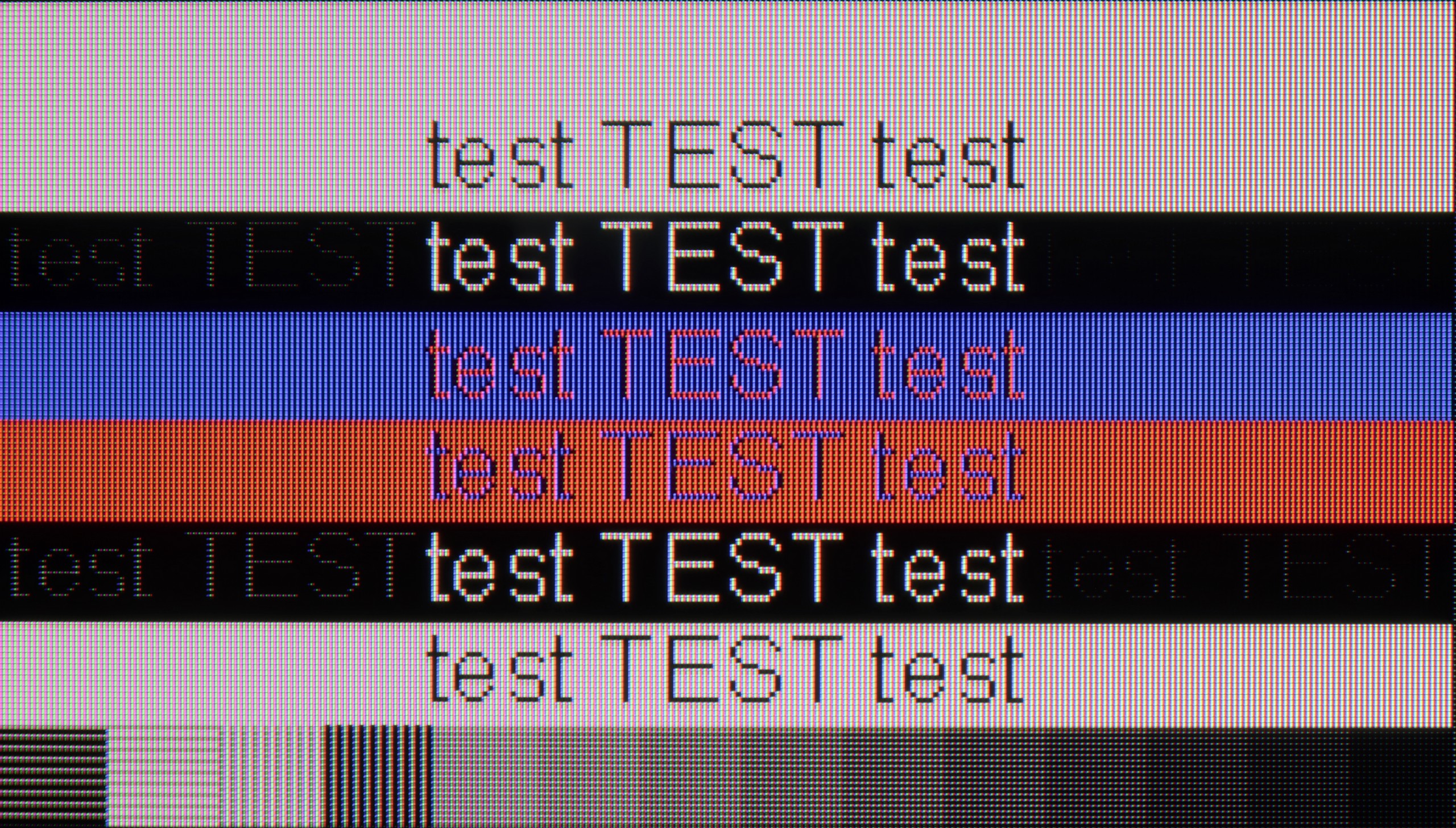

In terms of collaboration with the computer, the E8Q performs really well. It supports chroma 4:4:4 at full 4K resolution and the highest refresh rates, so the readability of fonts – even the smallest ones – is at a very good level. There are slight blurriness issues with exceptionally thin fonts, but in everyday use, it's hard to consider this a serious problem. A nice addition for PC gamers is the ability to achieve up to 288 Hz at lower resolutions. The E8Q communicates effortlessly with powerful graphics cards, making it an interesting choice not only for movies or consoles but also for gaming on the computer.
The OLED910 connected to a computer performs excellently in games. It's 144 Hz, has very low input lag, and supports G-Sync, so everything runs smoothly and without delays. It's really hard to find any faults for gaming. It’s a different story if someone wants to work with text on it. Ordinary black-and-white fonts look fine, but the problem starts when colour elements appear in the document. The lack of full chroma 4:4:4 support makes such text slightly blurry. For everyday office work, it’s a mediocre solution.
Viewing angles
3/10
7.6/10
E8Q, like most TVs with a VA panel, looks best when we're sitting directly in front of the screen. In this position, you can expect deep blacks, good colour saturation, and high contrast. Unfortunately, just shifting a little to the side causes the picture quality to drop – colours start to fade, and blacks become more grey than black. It's not surprising, but it's worth keeping in mind, especially if we plan to watch with a larger group from different spots in the lounge. On the bright side – in return, we get significantly better black levels than in IPS panels.
OLED910 performs very well in this regard. The new Tandem OLED RGB matrix means we no longer have the advantage that older MLA panels could leverage against QD-OLEDs. Here, instead of a "remarkable" level, we simply have "very good". Brightness does drop a bit when viewed at an angle, but colour saturation is maintained, and even with a greater deviation, the image looks appealing. It will be hard to find a situation where the viewing angles in this model actually bother someone.
TV efficiency during daytime
6.2/10
7.3/10
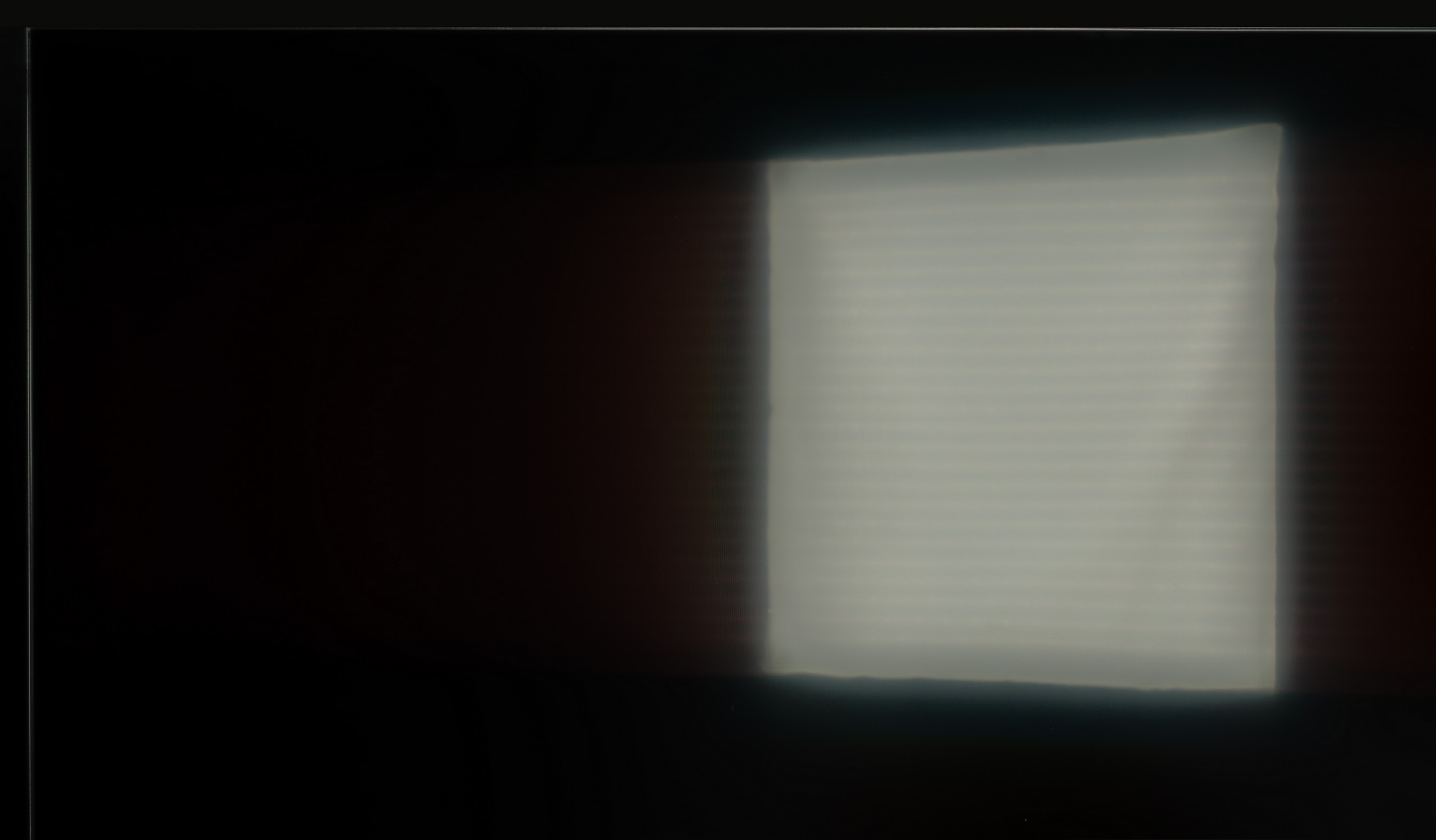



Matrix brightness
Average luminance SDR
Philips OLED910: 614 cd/m2
Hisense E8Q: 504 cd/m2
Hisense E8Q isn't afraid of bright interiors. Even when the sun is shining outside, the television can maintain good image readability. With a brightness level of around 500 nits, you can comfortably watch content during the day without feeling like everything is drowning in glare. The satin screen coating also helps to nicely minimise reflections – it doesn't completely eliminate them, but reduces them enough that they don't interfere with everyday viewing.
Details about the matrix
Subpixel Structure:
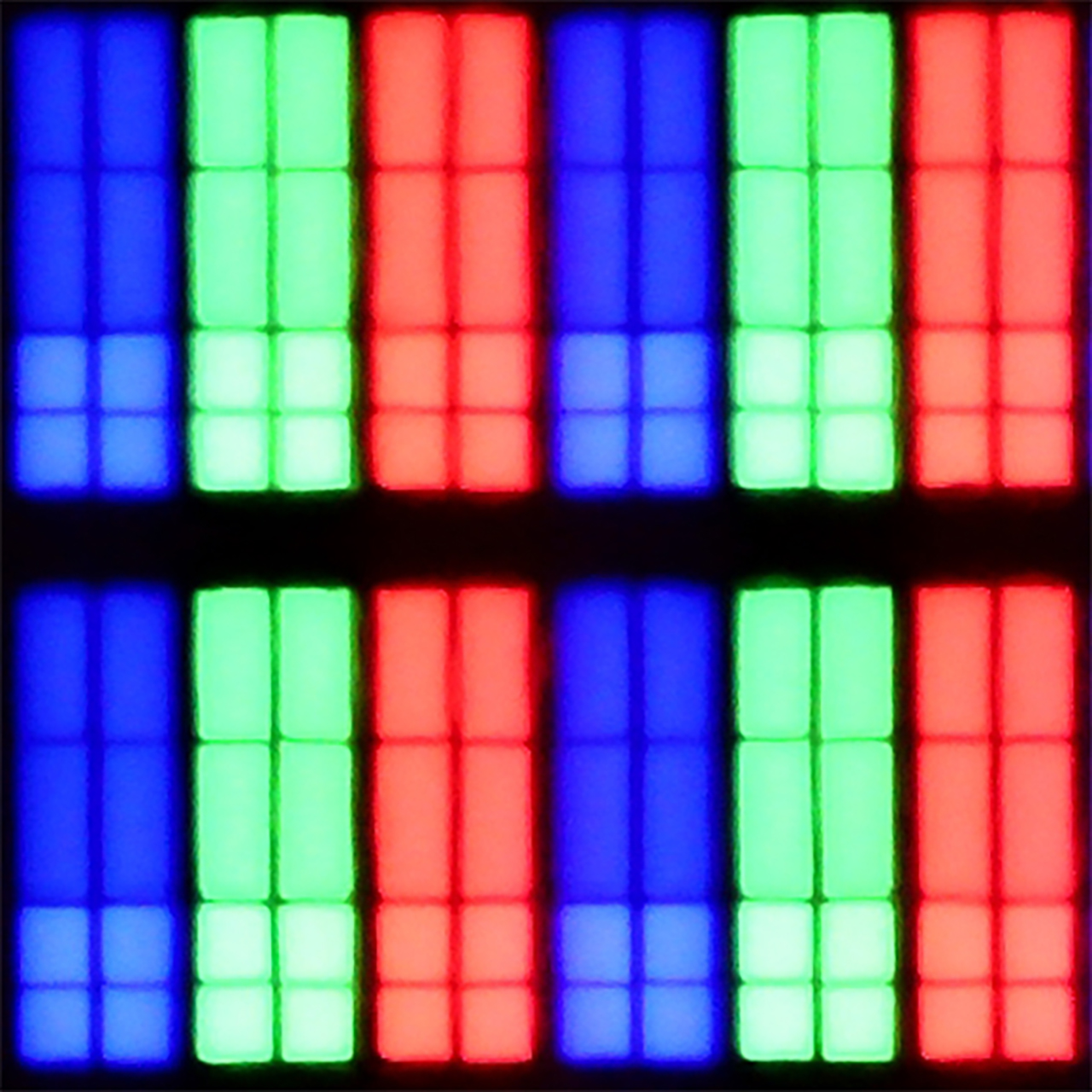
Panel uniformity and thermal imaging:
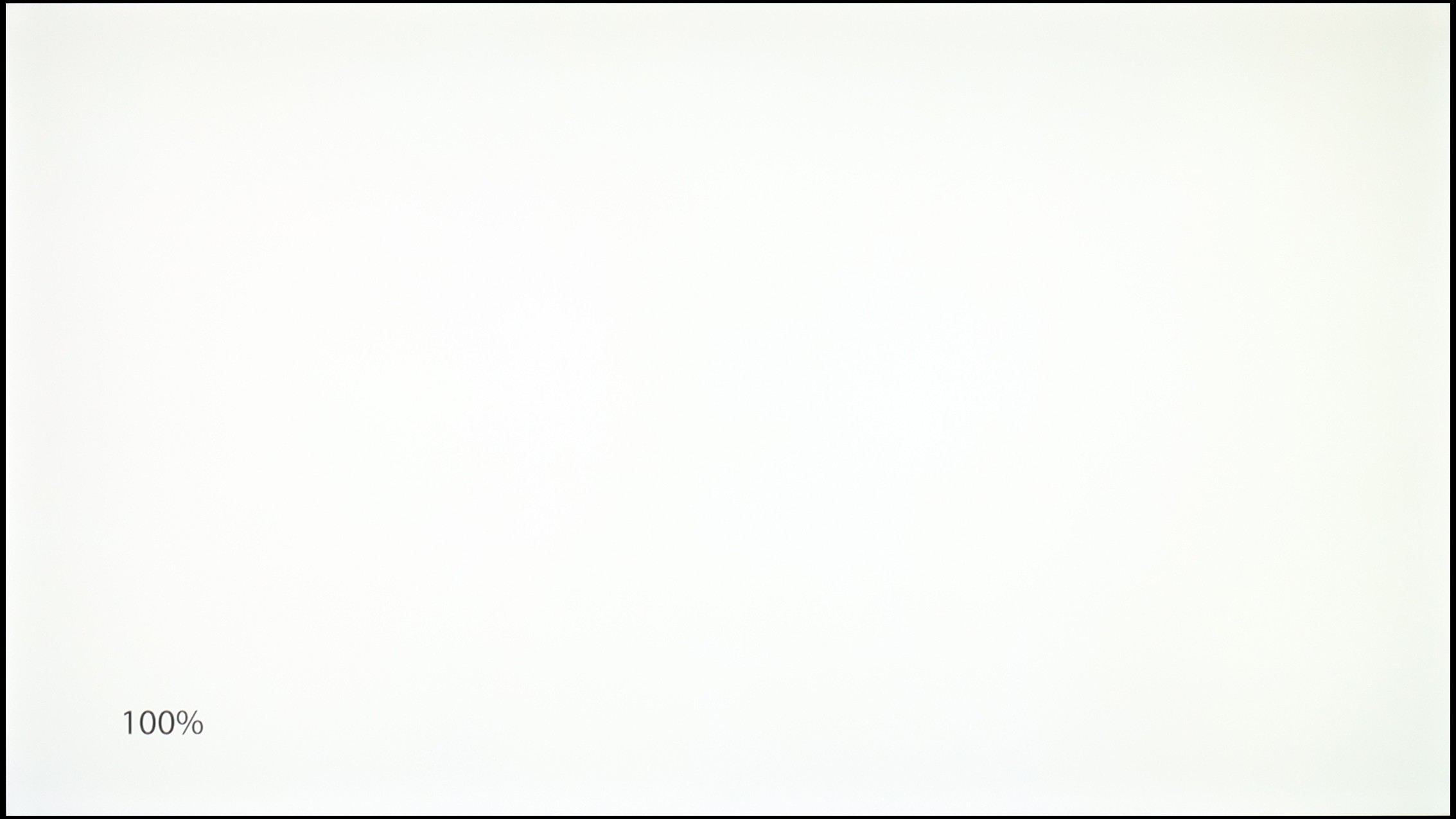

Hisense E8Q
Philips OLED910
TV features
8.9/10
6.4/10
- HDMI inputs2 x HDMI 2.0, 2 x HDMI 2.1 48Gbps2 x HDMI 2.0, 2 x HDMI 2.1 48Gbps
- Other inputsRCA (Chinch)
- OutputsToslink (Optical audio), eARC (HDMI), ARC (HDMI), Mini-Jack (Headphones)Toslink (Optical audio), SPDIF (Coaxial audio), eARC (HDMI), ARC (HDMI), Mini-Jack (Headphones)
- Network InterfacesWi-Fi 2.4GHz, Wi-Fi 5GHz, Ethernet (LAN) 100MbpsWi-Fi 2.4GHz, Wi-Fi 5GHz, Ethernet (LAN) 100Mbps
- TV receptionDVB-T, DVB-T2, DVB-S, DVB-S2, DVB-CDVB-T, DVB-T2, DVB-S, DVB-S2, DVB-C
Classic features:
- Recording to USB (terrestrial TV)
- Recording programming
- Picture in Picture (PiP)
- RF remote control (no need to aim at the screen)
- Backlit remote control
- Teletext
- Audio only mode
- Bluetooth headphones support
- Simultaneous Bluetooth headphones & TV audio
Smart features:
- AirPlay
- Screen mirroring (Windows Miracast)
- Voice search
- Voice search in native language
- Ability to connect a keyboard and mouse
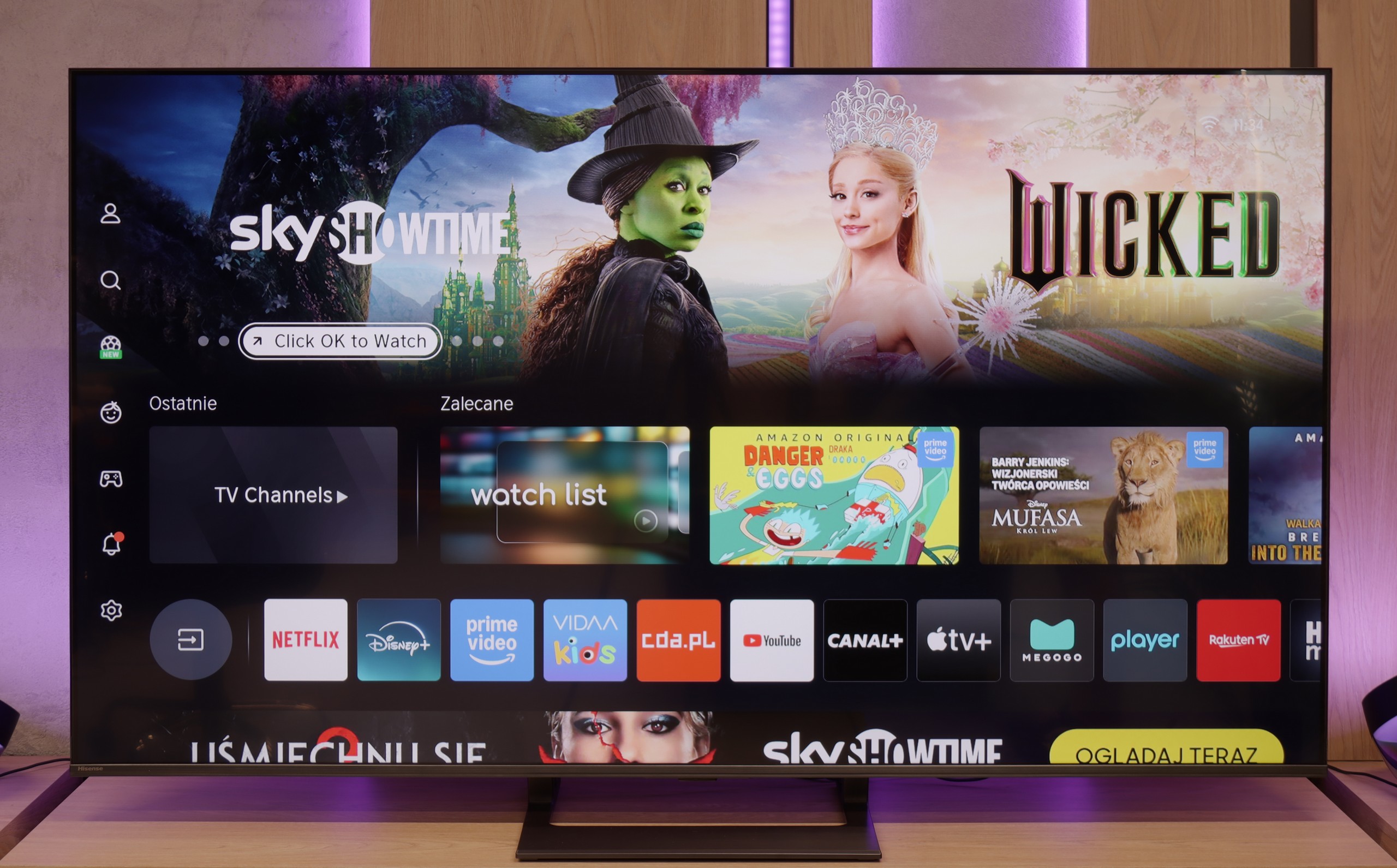
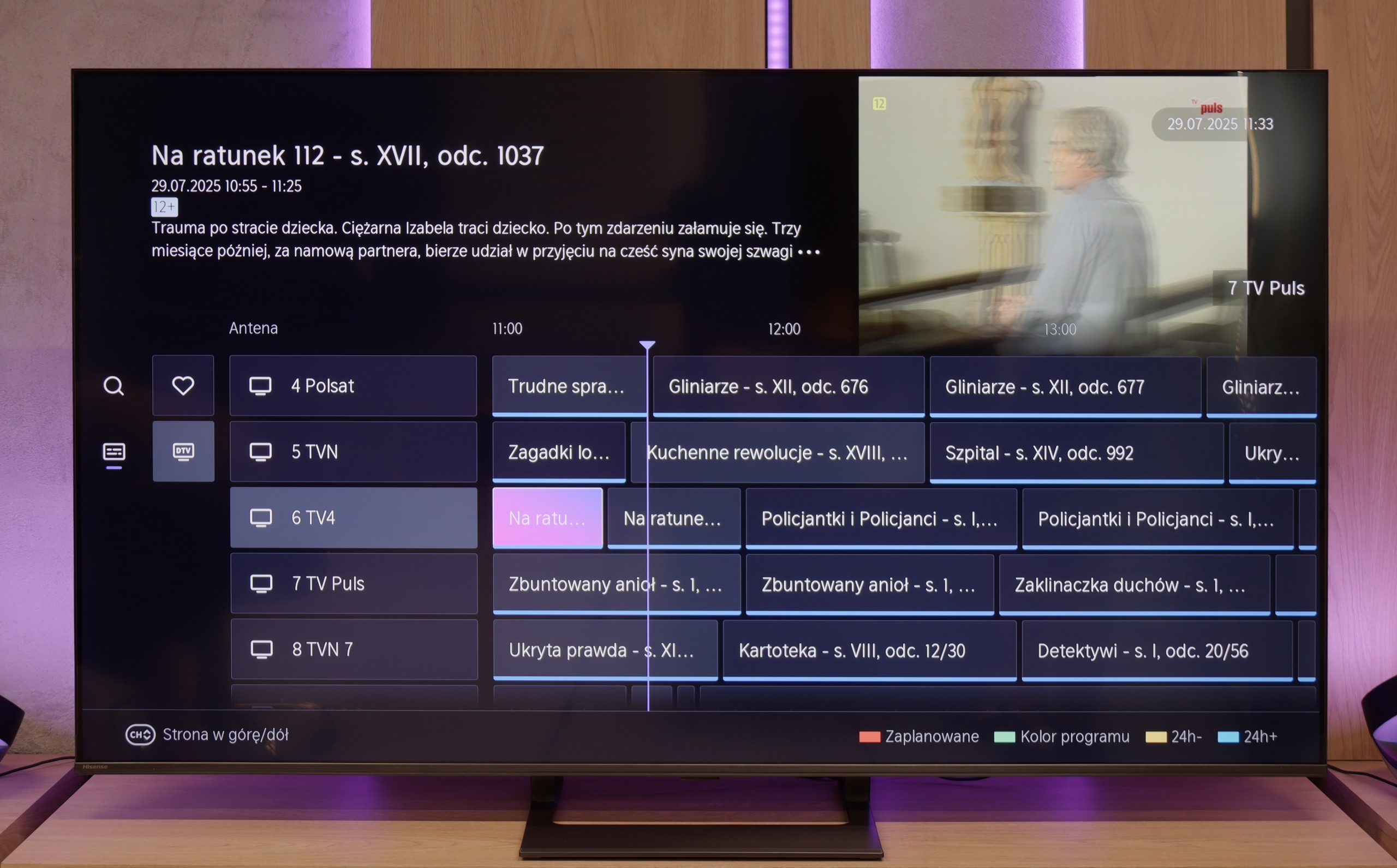
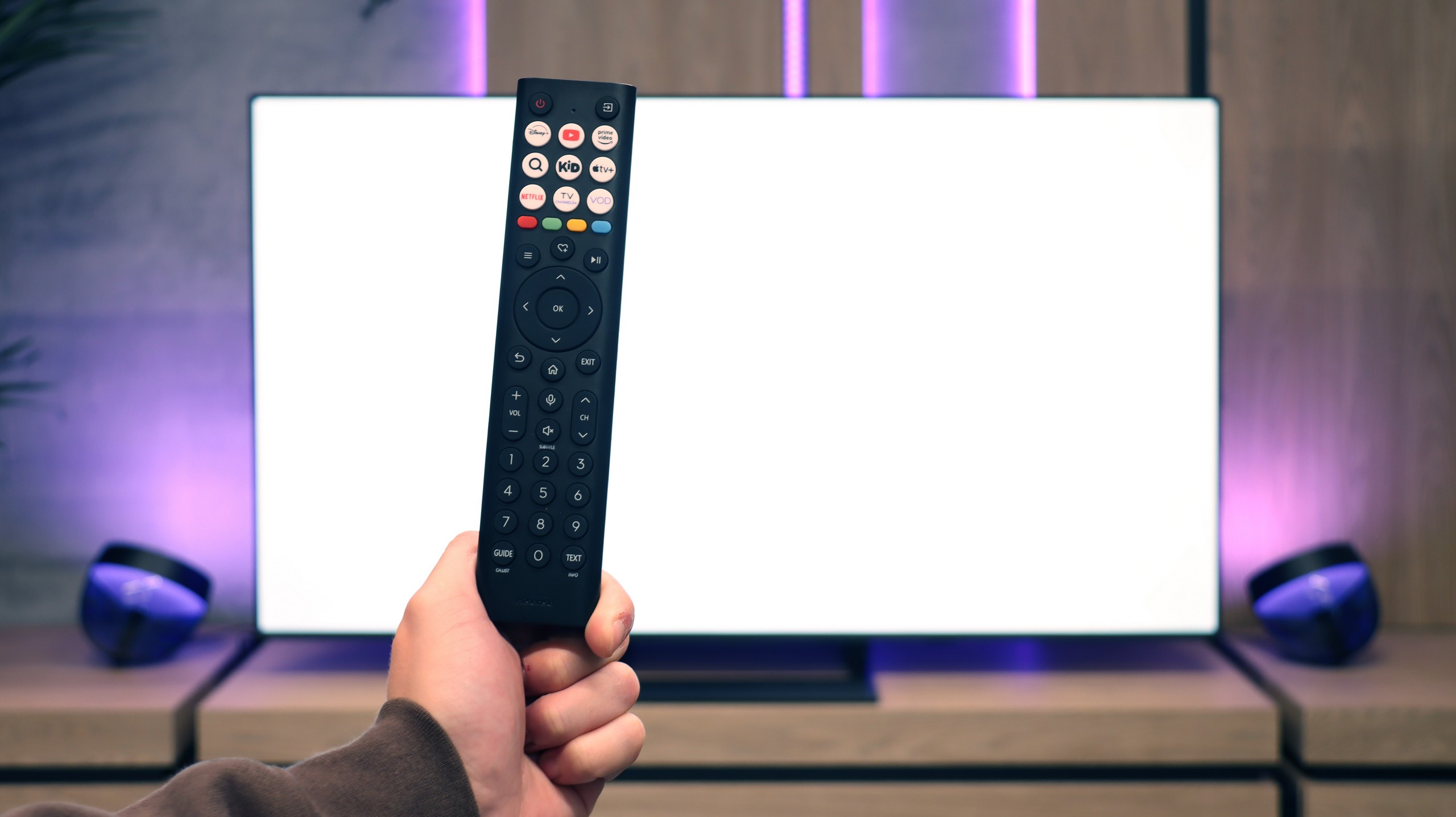




Classic Features – E8Q
The Hisense E8Q is not just equipment for gamers or movie enthusiasts – it can also serve as an everyday TV for the whole family. We can record programs to USB, connect headphones or speakers via Bluetooth, and the entire interface – including the channel guide – is clear and easy to use. It only lacks a PiP function, but besides that, the set of classic features is really complete.
Smart TV – VIDAA System
The E8Q runs on the VIDAA system, which is becoming more refined every year. Voice search in Polish works flawlessly, and it's easy to stream content from a phone (AirPlay and screen mirroring). The system itself operates smoothly, without hiccups, although – as is often the case with closed platforms – there may be one or two less popular apps missing. It’s worth checking before purchase whether it has everything we use daily.
Google TV and smart features
The OLED910 operates on the Google TV system, and that's definitely its strong suit. We have access to a huge library of apps, from popular streaming platforms to niche programmes. On top of that, there’s voice search and Google Assistant, which works really well and understands even less obvious commands like "check the weather" or "give me a horror movie suggestion for tonight." There's also support for AirPlay, which makes it easier to work with Apple devices. Unfortunately, classic screen mirroring just didn’t work in our tests, so we can’t give that element a thumbs up.
Classic features
When it comes to more traditional solutions, the OLED910 doesn’t offer anything special. There’s a rarely seen mini-jack headphone socket, which could be useful for seniors or those using older speakers. The remote has backlit buttons, which is convenient, but it also operates on infrared, so you have to aim at the screen, which in 2025 seems a bit outdated. While you can use headphones and the TV speakers at the same time, unfortunately, only wired – wireless isn't an option, which is a slight inconvenience since who would want to use wired headphones these days? It also lacks PiP functionality and the ability to record materials to USB.
4-sided Ambilight system
And of course, there’s Ambilight. The OLED910 features a full four-sided system. It makes the TV seem larger, and the content being viewed gains additional depth and more spectacular character. The effect is genuinely strong, especially when the TV is mounted on the wall and the light fills the entire surroundings. This is one of those additions that's hard to give up once you've tried it.
Playing files from USB
8.2/10
9.5/10
Supported photo formats:
Maximum photo resolution:
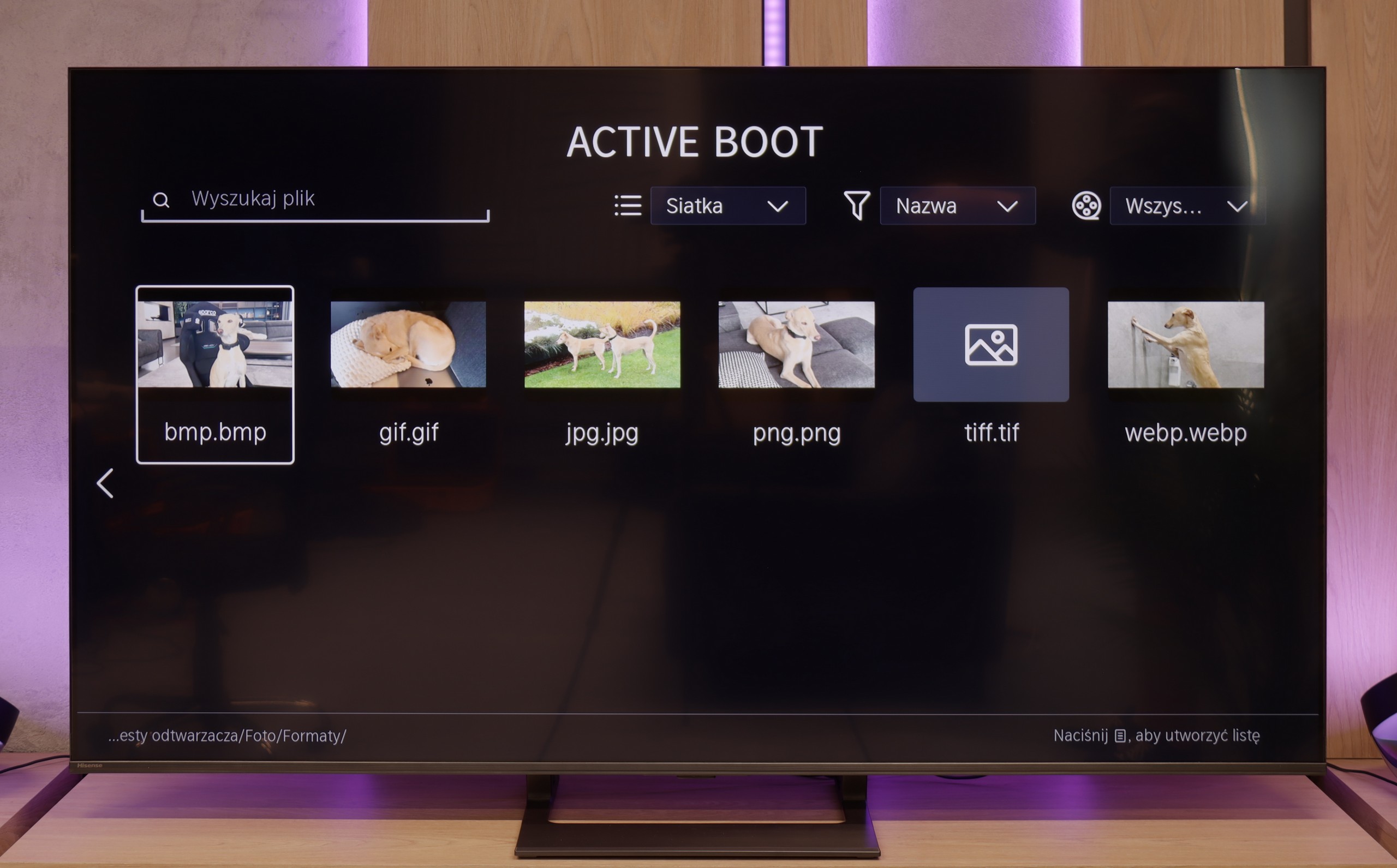

The built-in media player in the E8Q performs quite well. It supports most popular video and audio formats, and files from USB drives or external disks play without major issues. Polish characters? They're supported. Subtitles? They work. The only minor drawback is the occasional problem with displaying high-resolution images – especially those from cameras or smartphones. So if you're planning to show holiday photos on the big screen, it’s worth checking beforehand that they all load correctly from the memory of the disk or USB drive.
OLED910 handles playing files from a USB drive or disk without any issues. It supports virtually all popular video, photo, and music formats, so you’re unlikely to encounter anything it can't open. The player itself looks quite simple, even clunky, but it operates smoothly. And if someone feels the need for more advanced options, you can always download VLC or another app from the Google Play Store.
Apps
7.7/10
9.6/10














































Sound
7.2/10
9.5/10
- Maximum volume85dB88dB
- Dolby Digital Plus 7.1
- Dolby True HD 7.1
- Dolby Atmos in Dolby Digital Plus (JOC)
- Dolby Atmos in Dolby True HD
- DTS:X in DTS-HD MA
- DTS-HD Master Audio
Here unfortunately, the Hisense E8Q didn’t make the best impression on us. Although on paper it has speakers with a power of 40 W (which is just a bit less than 50 W in the U7Q), in practice the difference is significant – and unfortunately not in favour of the E8Q. During testing, it quickly became clear that something wasn’t right. When the volume was turned up above 40–50%, the entire back casing began to resonate, and unpleasant crackling sounds emitted from the TV. Even during regular viewing, it was hard not to notice this, and definitely hard not to hear. In this form, it’s difficult to talk about listening comfort. We don’t rule out that it was a problem with a specific test unit, but still – it’s worth keeping this in mind. If you care about good sound, consider connecting a soundbar or… go for the U7Q, which definitely performs better.
This is one of the best-performing televisions we've had the chance to test in the office. The built-in soundbar does all the work here, and you can confidently say it can replace basic external audio setups. The sound is deep, clear, and truly enjoyable, and the collaboration with Bowers & Wilkins proves to be not just a marketing gimmick, but a real enhancement of sound quality. If someone would like to take it a step further, Philips offers the option to connect an external subwoofer via a dedicated pre-out. At that point, such a setup reaches a level that's hard to find in televisions – and you can boldly talk about truly cinema-like experiences.
Acoustic Measurements
85dBC (Max)
75dBC
88dBC (Max)
75dBC


